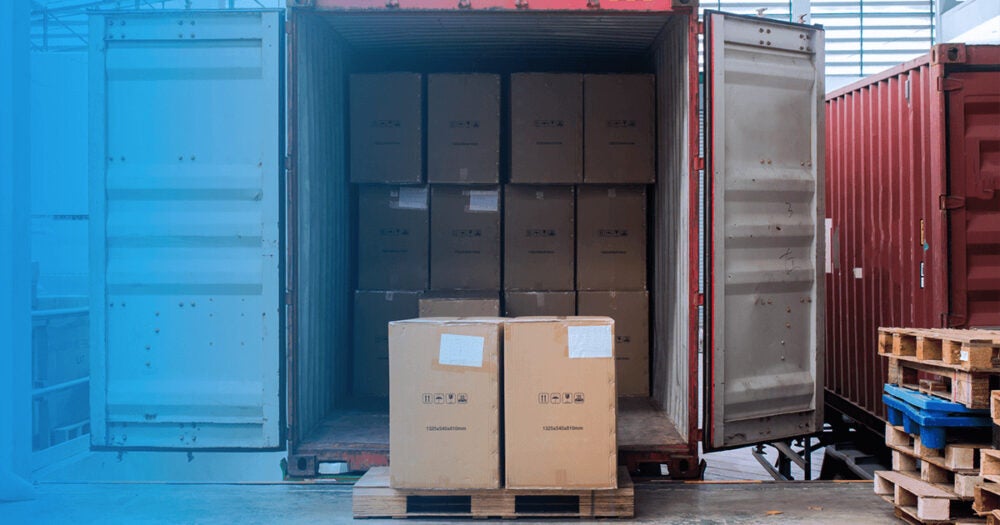As a shipper, you probably have asked at one point or another "what is freight class?" You've probably even wondered "how to calculate freight class." With everything that a shipper needs to know, it can get confusing. In this article, we cover everything you need to know about freight classes.
What is freight class?
Freight classes are designed to help you get common standardized freight pricing for your shipment when working with different carriers, warehouses, brokers and third-party logistics (3PL) providers. Freight classes are defined by the National Motor Freight Traffic Association (NMFTA) and made available through the National Motor Freight Classification (NMFC).
Role of freight classification in LTL shipping
Determining your shipment's freight class is a vital step to effectively managing LTL freight. It's a big factor in determining your freight hard costs, but also is a very important factor when it comes to dealing with any possible freight claims.
Additionally, some of the most common shipping problems are often related to not understanding what LTL freight class to choose and put on your BOL. Some shippers may find it easy to randomly select a class or stick with one they have always used. However, this will hurt you in the long run. Shippers may save money on the freight shipment by picking a lower class, but time is wasted when the carrier reclasses the shipment and the invoice doesn't match the expected costs.
A little education, especially when it comes to freight class, can really help you save on LTL rates, time, resources and, most importantly, avoid delays in getting freight inbound or outbound to your customer.
Why is the NMFC important?
In the United States, each commodity or type of product is assigned a National Motor Freight Classification (NMFC) code and corresponding class for less than truckload (LTL) freight shipments. The NMFC system is a standardized method designed to give consumers a uniform pricing structure when transporting freight.. The number assigned to an item is important to LTL carriers in determining the tariffs, which in turn determine the price charged to the customer.
How to calculate freight class
Before you determine your freight class for your shipment, you must identify certain factors about your specific freight. LTL freight class is based on weight, length and height, density, ease of handling, value and liability from things like theft, damage, breakability and spoilage. The definitions for each are as follows:
(Weight, Length, Height) Freight Density and Value
Freight density is the space the item occupies in relation to its weight.
The density is calculated by dividing the weight of the item in pounds by its volume in cubic feet. Your item's volume in cubic feet is Length x Width x Height/1,728, where all dimensions are measured in inches. The density of your item = Weight/Volume, where Weight is measured in pounds and Volume is measured in cubic feet.
Stowability
Most freight stows well in trucks, trains and boats, but some articles are regulated by the government or carrier policies. Some items cannot be loaded together. Hazardous materials are transported in specific manners. Excessive weight, length or protrusions can make freight impossible to load with other freight. The absence of load-bearing surfaces makes freight impossible to stack. A quantifiable stowability classification represents the difficulty in loading and carrying these items.
Handling
Most freight is loaded with mechanical equipment and poses no handling difficulties, but some freight, due to weight, shape, fragility or hazardous properties, requires special attention. A classification that represents ease or difficulty of loading and carrying the freight is assigned to the items.
Liability
Liability is the probability of freight theft or damage, or damage to adjacent freight. Perishable cargo or cargo prone to spontaneous combustion or explosion is classified based on liability and assigned a value per pound, which is a fraction of the carrier's liability. When freight classification is based on liability, density must also be considered.
How about true density-based freight class?
Absent of any unusual or significant handling, stowability or liability characteristics, density is of prime importance in the assignment of classes. The CCSB has developed density guidelines that are based on the precedent of pertinent administrative as well as classification decisions. The present guidelines are below.
The density guidelines are used in the assignment of freight classes where the average density of a particular commodity or group of commodities is representative or reflective of the range of densities exhibited by that commodity or commodity group. Furthermore, the density/class relationships set forth in the guidelines presume that there are no unusual or significant handling, stowability or liability characteristics, which would call for giving those characteristics additional or different "weight" in determining the appropriate class.
Commodities or commodity groups exhibiting a wide density range not accurately reflected by a single overall average density may be assigned density-based classes; especially where there are no unusual or significant handling, stowability or liability characteristics and where there is no other feasible means of effectively narrowing the range. And where densities are distributed throughout the range, commodities or commodity groups may be assigned classes predicated on a full density scale.
Need help classifying your LTL Freight Shipping?
As an industry-leading 3PL, GlobalTranz can help you manage freight costs, set up processes and empower you with technology to make freight classification easier and automated. As a shipper, that's important. Getting freight class wrong will cost you. If you incorrectly classify your item to be shipped it can be reclassified by the freight carrier. Disputing this is difficult, time-consuming and you will be charged the difference (usually without a discount). Partner with GlobalTranz to get access to best-in-class LTL shipping solutions, including services, tools and technology that help you manage freight classification. To learn more about how we can help you, reach out to one of our shipping experts today!

